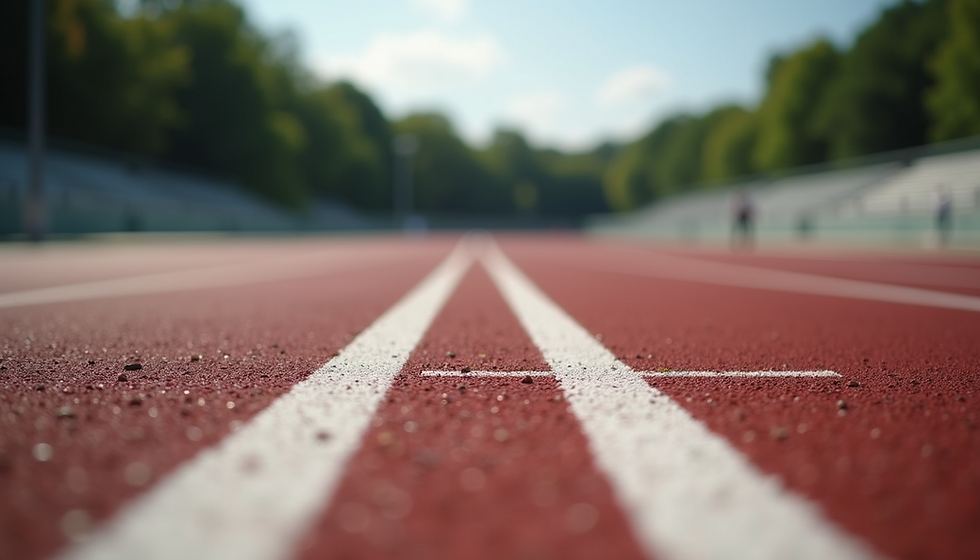How Sports Therapy Can Help Prevent and Recover from Injuries
- kennysimpson1
- Jun 18
- 4 min read
In the world of sports and physical activity, injuries can often feel like an inevitable part of the game. Whether you’re a weekend warrior or a professional athlete, understanding how to prevent and recover from injuries is crucial. This is where sports therapy comes into play. By focusing on both prevention and rehabilitation, sports therapy offers effective strategies that can help keep you in the game.
What Is Sports Therapy?
Sports therapy involves the assessment, treatment, and rehabilitation of sports-related injuries. Its primary aim is to help athletes of all levels recover from injuries quickly and safely, allowing them to return to their sport with minimal downtime. Sports therapists are trained professionals who use a variety of techniques, including manual therapy, exercise prescription, and education, to treat and prevent injuries.

Why Should You Consider Sports Therapy?
Sports therapy is beneficial for several reasons. Firstly, it focuses on the specific needs of athletes. Unlike general physical therapy, which may address a wide range of conditions, sports therapy is tailored to the types of movements and demands placed on an athlete's body. This specialised focus allows therapists to provide targeted rehabilitation and preventative strategies.
Statistics also underscore the importance of sports therapy. According to the National Athletic Trainers’ Association, about 50% of injuries in sports are preventable through proper training and rehabilitation methods. Sports therapy can be an integral part of this preventative approach.
Common Injuries Treated with Sports Therapy
Sports therapy covers a wide array of injuries, from acute sprains and fractures to chronic conditions like tendonitis and shin splints. Some of the most common injuries treated include:
Ankle Sprains: A frequent injury among athletes, these occur when the ligaments surrounding the ankle are stretched or torn. Swift rehabilitation can prevent long-term issues.
Knee Injuries: From ACL tears to runner's knee, knee injuries often require specialised attention. Sports therapists provide tailored recovery plans to ensure safe rehabilitation.
Shoulder Injuries: Sports involving overhead motions, such as baseball or swimming, often lead to shoulder issues. Sports therapy helps strengthen supporting muscles, providing better stability.
Tendonitis/Tendinopathy: Common in runners and cyclists, tendonitis/tendinopathy can cause persistent discomfort. Sports therapists promote recovery through targeted exercises and rest recommendations.
Stress Fractures: Often linked to overuse, these tiny cracks in the bone require careful management to ensure proper healing.
By consulting a qualified therapist, athletes can receive personalised treatment plans that address their specific injury types and activity demands.

The Role of Injury Prevention
A significant aspect of sports therapy is injury prevention. Athletes can benefit from specific assessments that identify potential weaknesses in their physical condition. Here, sports therapists assess biomechanics and movement patterns to tailor strength and conditioning programs that reduce injury risk.
For instance, a therapist may observe that a football player has imbalanced strength in their lower body. By addressing this imbalance through targeted exercises, the player can improve their overall stability and decrease the likelihood of injury.
In addition to strength training, sports therapists often recommend proper warm-up and cool-down routines. A study published in the British Journal of Sports Medicine found that athletes who performed dynamic stretching before exercise had a significantly lower risk of injuries. Incorporating tailored warm-up routines can therefore be a simple yet effective injury prevention strategy.
Characteristics of Effective Sports Therapy Services
When looking for sports therapy services, it’s essential to choose a facility that provides comprehensive care. Here are some characteristics to consider:
Qualified Professionals: Ensure that the therapists are certified and have extensive experience in sports-specific rehabilitation.
Comprehensive Assessments: Look for services that include thorough assessments of your physical condition, movement, and strength.
Personalised Treatment Plans: Effective therapy should involve tailored exercise and rehabilitation plans based on individual needs.
Education and Engagement: A good sports therapist will not only treat injuries but also educate athletes on preventive measures and recovery strategies.
Accessible Facilities: The therapy centre should have adequate facilities and equipment for various rehabilitation procedures.
By selecting the right sports therapy services, you can significantly improve your recovery process and prevent future injuries.

Making the Most of Your Sports Therapy Experience
To maximise the benefits of sports therapy, it is important to approach it proactively. Here are some actionable recommendations to ensure a successful experience:
Be Honest About Your Symptoms: Clearly communicate your injury history and any pain you are experiencing with your therapist. This information is crucial in tailoring your treatment.
Commit to the Program: Adhere to the exercise and rehabilitation plan laid out by your therapist. Consistency is key in seeing real improvements.
Take Advantage of Follow-ups: Regular follow-up sessions can help therapists adjust your rehabilitation plan as needed.
Integrate Therapy into Your Training Regimen: Combine sports therapy with your regular training activities. This holistic approach can enhance your performance.
Stay Educated: Ask questions and learn about the techniques being used. Understanding the reasons behind your treatment will help you commit to long-term health.
Embracing a Strategic Recovery Routine
After injury, having a structured recovery routine can significantly affect the healing process. Pairing rest with sensible activity is vital. For example, while you should avoid putting stress on a healing sprain, incorporating gentle range-of-motion exercises can be beneficial.
In addition, consider cross-training during your recovery. Participating in activities with less impact on the injured area can keep you active while ensuring a safe return to your primary sport.
Always seek your sports therapist’s advice on how to balance recovery routines with your training so you can resume full participation as soon as possible.
Ready to Take the Next Step?
Sports therapy has a significant role in both preventive care and rehabilitation. Its tailored approach addresses individual athlete needs, helping to manage injuries efficiently and effectively. If you're looking to enhance your strength, decrease injury risk, and facilitate recovery, consider exploring sports therapy services.
Investing in your physical health through sports therapy can lead to longer careers and improved performance, allowing you to enjoy the sports you love. Start your journey today and empower yourself to stay active and injury-free.




Comments